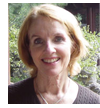NGSS "Practices" Dimension Requires Teacher Mindset Shift
From Elizabeth Murray
 MIT BLOSSOMS is working with a group of Massachusetts science teachers to develop new BLOSSOMS lessons that will demonstrate the adoption of NGSS Science and Engineering Practices into science teaching. Therefore, it has been important for us to try to break down just what is meant and required by this new emphasis on “practices.” MIT BLOSSOMS is working with a group of Massachusetts science teachers to develop new BLOSSOMS lessons that will demonstrate the adoption of NGSS Science and Engineering Practices into science teaching. Therefore, it has been important for us to try to break down just what is meant and required by this new emphasis on “practices.”
The Science and Engineering Practices incorporate much of what has been thought of as “inquiry”, but go on to elaborate just how to engage in the work of inquiry and emphasize how this work is part of building knowledge. These practices reflect a commitment to “figuring out,” and characterize how learners build knowledge by posing questions, designing investigations, building explanations and models of findings, and engaging in argumentation to conduct comparisons of competing ideas and reach consensus.
There seem to be two major shifts in the approach to science teaching with this new dimension of practices. The first is an emphasis on the development of models, focusing students on the coherence of the activity, moving from questions to empirical tests to explanatory models. The practices dimension explicitly includes elements of constructing explanations and developing general models that can be applied to a range of phenomena to explain how and why they occur. A second change – away from the narrower conception of inquiry - is the importance of social interaction and argumentation from evidence in the development of these explanatory ideas. Many teachers will need to develop pedagogical approaches to guide students in science practice - in which questions are grounded in phenomena, leading to investigations, and then students develop models through argumentation, refining those models through new phenomena that challenge existing models.
The major shift here is from a disciplinary organization, in which the science discipline provides the breakdown and ordering of ideas, to organizing around the sense-making activity. This represents a major shift in how teachers approach what it means for students to learn science, what counts as developing an answer to a science question, and what assessments are meaningful indicators of this learning.
Elizabeth Murray is Project Manager of the MIT BLOSSOMS Initiative.
Back to newsletter |